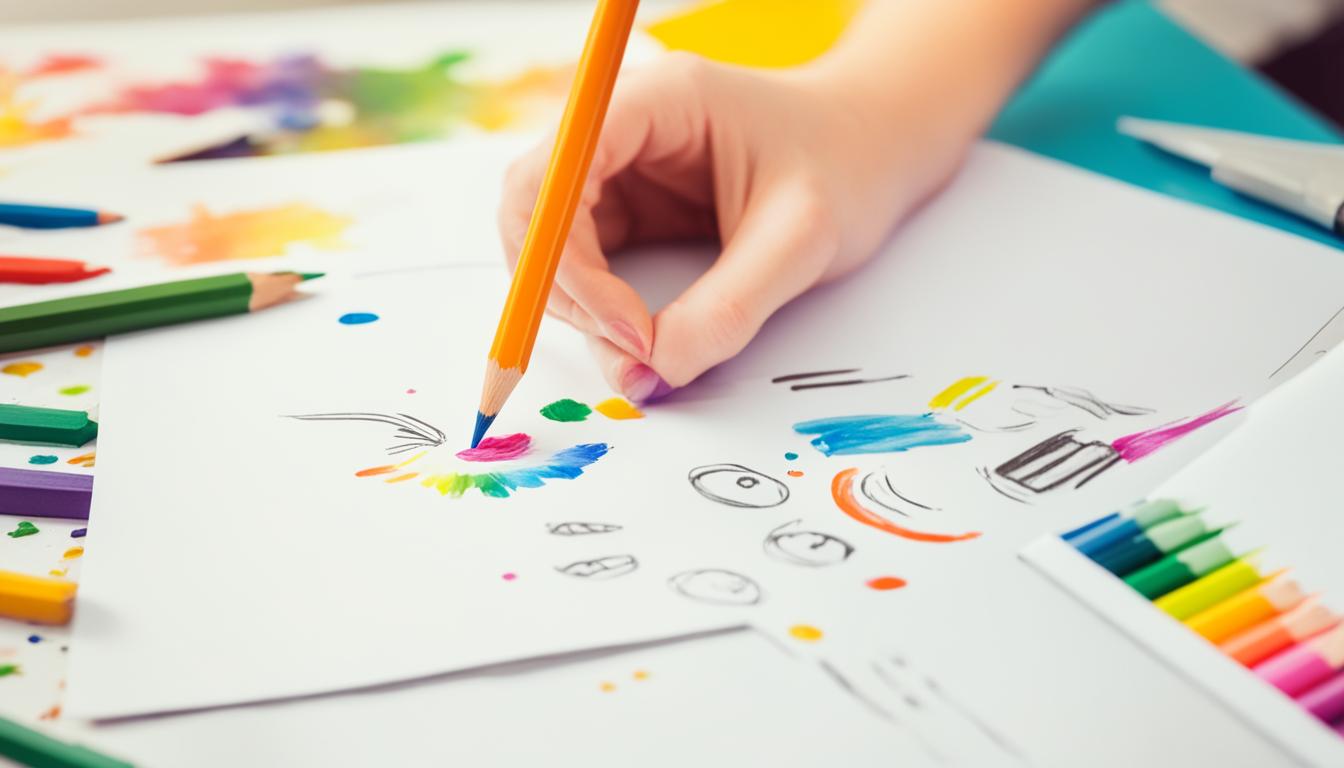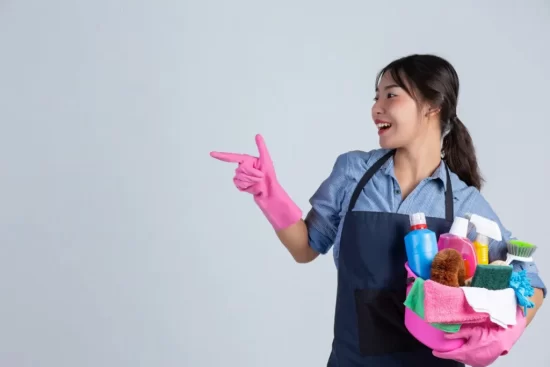
Have you ever looked at a beautifully drawn artwork and wondered how to start drawing yourself? Maybe you believe that drawing is a talent reserved for the naturally gifted, and you’re unsure if you have what it takes to create art. But here’s a question for you: Is drawing a skill that can be learned and developed through practice?
Here, we will show you that anyone can start drawing and that artistic talent is not just an innate gift. Whether you’re a complete beginner or have some experience, we will provide you with the tools and knowledge to ignite your artistic journey.
We will begin by discussing the essential drawing supplies you need to get started. From pencils to paper, we will discuss about selecting the right materials for your artistic goals.
How to Start Drawing – Beginner’s Guide for Artists
1. Must-Have Drawing Supplies
- Pencils:
- A set with different hardness levels (e.g., HB, 2B, 4B) is essential.
- Different pencil grades allow for varying levels of darkness and line weight.
- Having a range of pencils provides flexibility and control over your artwork.
- Erasers:
- Kneaded Eraser:
- Can be molded into different shapes.
- Useful for erasing small details or creating highlights.
- Vinyl Eraser:
- Effective for erasing larger areas.
- Kneaded Eraser:
- Paper:
- Heavier Weight Paper:
- Recommended types include drawing paper or bristol board.
- Can better withstand the pressure applied by pencils.
- Texture:
- Choose paper with a texture that suits your drawing style.
- Heavier Weight Paper:
- Blending Stump (Optional):
- A cylindrical tool made of tightly rolled paper.
- Used for blending and smudging graphite or charcoal.
- Helps achieve smooth transitions and shading effects.
- Popular Pencil Brands:
- Faber-Castell is known for quality.
- Prismacolor offers excellent pencils.
- Staedtler is a reliable brand.
- Experiment with different brands and grades to find what suits your style and budget.
Tips
- Investing in good quality drawing supplies enhances your drawing experience.
- Quality tools support and improve your artistic journey.
2. Mark-Making Warmup Exercises

Mark-making warmup exercises are essential for improving drawing skills, as they enhance hand-eye coordination, precision, and confidence. Practicing straight lines, curves, circles, and ellipses helps train your hand to accurately replicate observed shapes. This foundation allows for more complex drawings and greater detail accuracy.
To get started, follow these step-by-step instructions for mark-making warmup exercises:
- Begin with drawing straight lines in different orientations, focusing on maintaining consistent pressure and control.
- Move on to practicing curves and arcs, gradually increasing the complexity of the shapes as you gain confidence.
- Next, practice drawing circles of various sizes, paying attention to the smoothness of the curves.
- Finally, challenge yourself by drawing ellipses in different positions, as they can be more challenging to replicate accurately.
3. Sourcing Drawing References
Finding drawing references is crucial for beginners, as it adds depth and inspiration to their artwork. Using photo references helps develop observational skills and understanding of composition. Exploring paintings and drawings by other artists can spark creativity and provide insights into different styles and techniques. Look for references with good contrast and interesting shapes to create dynamic artwork. As you progress, transitioning to drawing from life is essential for capturing subtleties of light, shadow, and form, ultimately enhancing your drawing skills.
4. Fundamental Drawing Techniques
Developing a strong understanding of fundamental drawing techniques is essential for beginners, providing the building blocks for realistic and appealing artwork. Mastering line work through practicing different types of lines and pencil pressures adds depth and dimension to drawings. Shading techniques, such as parallel hatching, simulate light and shadow interactions, adding realism. Understanding proportion and perspective helps in accurately depicting objects and creating the illusion of depth. Continuous practice and embracing the learning process will improve your drawing skills and boost your creative confidence.
5. Step-by-Step Drawing Instructions

To begin, gather your drawing supplies, including pencils of different hardness, an eraser, and paper. Find a comfortable and well-lit workspace where you can focus on your artwork.
- Start by lightly sketching the basic shapes of your subject. Pay attention to the proportions and overall form of the subject.
- Add more details and refine the shapes. Look closely at the reference or object you are drawing, and observe the small details that make it unique.
- Continue adding more details and textures. This is where you can showcase your shading skills and create depth in your drawing.
- Once you are satisfied with the details, clean up any stray lines and erase any unnecessary guidelines.
- Finally, add the finishing touches by enhancing the highlights and shadows to create a more realistic and three-dimensional effect.
Remember, don’t be discouraged if your drawing doesn’t turn out perfect on your first attempt. Drawing is a skill that develops with practice. The more you draw, the better you will become. Take your time, enjoy the process, and have fun with your artwork. Drawing is a form of self-expression, so let your creativity shine through!
6. Effective Practice Methods
Effective practice methods are essential for improving drawing skills, including daily drawing practice to build muscle memory and hand-eye coordination. Gesture drawing involves quick, loose sketches to capture movement and develop expressive lines. Contour drawing focuses on slow, deliberate strokes to improve accuracy in capturing shapes and details. Observational drawing enhances your ability to translate real-life objects, people, or scenes onto paper. Consistently practicing these methods will strengthen your artistic foundation and skills.
Tips for effective practice:
- Set achievable goals for each practice session. Start with simple subjects and gradually increase the complexity as you improve.
- Create a structured practice routine. Dedicate specific time slots to practice drawing each day or week.
- Experiment with different drawing exercises and methods to keep your practice sessions varied and engaging.
- Seek feedback from other artists or join a drawing community to receive constructive criticism and learn from others.
- Embrace and learn from challenges that arise during your practice sessions. Mistakes and setbacks are valuable learning opportunities.
By incorporating these practice methods and exercises into your drawing routine, you will see noticeable improvement in your skills over time.
7. Recommended Drawing Resources and Inspiration

As you continue your drawing journey, it’s important to have access to valuable resources and seek inspiration to further develop your skills. Here are some recommended drawing resources that can help you refine your techniques and explore new artistic possibilities:
Drawing tutorials: Online art tutorials are a great way to learn new techniques, gain insights from experienced artists, and expand your knowledge. Websites like Skillshare and Udemy offer a wide range of drawing courses taught by professionals, covering topics from basic drawing skills to advanced techniques. Also platforms like YouTube can also use for reference.
Drawing courses: If you prefer a more structured learning experience, consider enrolling in online drawing courses. Reputable platforms like Drawspace and CGMA offer comprehensive courses taught by industry experts, allowing you to dive deep into specific areas of drawing and hone your skills.
Books on drawing: Books can be a valuable source of knowledge and inspiration for artists. Explore renowned titles like “Drawing on the Right Side of the Brain” by Betty Edwards and “Figure Drawing for All It’s Worth” by Andrew Loomis. These books provide valuable insights, exercises, and techniques that can help you improve your drawing abilities.
Inspiration on Pinterest: If you’re seeking inspiration and reference materials, Pinterest can be an excellent platform to explore. Browse through a wide range of art boards and collections created by artists and enthusiasts. Discover unique references, ideas, and styles that can inspire your own artworks and take your drawing skills to the next level.
By taking advantage of these recommended drawing resources and seeking inspiration from various platforms, you’ll have a wealth of information and ideas to guide you on your artistic journey. Remember, continuous learning and exploring new concepts are key to becoming a proficient artist. Keep pushing your boundaries, experimenting with different styles, and nurturing your creativity.
FAQs on Start Drawing
How can I teach myself to draw?
Teaching yourself to draw can be achieved by following a beginner’s guide for artists that covers the necessary steps and techniques. Start by obtaining the essential drawing supplies and practicing mark-making warmup exercises. Utilize drawing references, such as photos or other artists’ work, to improve your observation skills. Learning and mastering fundamental drawing techniques, practicing regularly, and exploring additional resources will aid in your self-learning process.
How to start a sketch?
To start a sketch, gather your sketching materials, such as pencils and sketchbooks. Choose a subject or scene that interests you and spend time observing it. Begin with light, loose lines to create a rough outline of the subject’s basic shapes and proportions. Gradually refine the sketch by adding more details and shading. Remember, sketches are meant to capture the essence and feel of the subject rather than being perfectly polished drawings.
Where can I find good drawing references?
Good drawing references can be found through various sources. You can use photos from stock image websites, study classic paintings or drawings, or explore other artists’ work for inspiration. When choosing references, look for subjects with nice contrast, interesting shapes, and sufficient detail. As you progress, you can start drawing from life to challenge yourself and further develop your observation skills.
What are recommended drawing resources and sources of inspiration?
Recommended drawing resources include online art tutorials, courses, and books that can provide structured learning and guidance. Platforms like Pinterest can offer a wealth of drawing inspiration through curated collections and ideas. Additionally, exploring art communities, visiting art galleries, and studying the works of master artists can stimulate creativity and provide further inspiration for your drawing journey.








